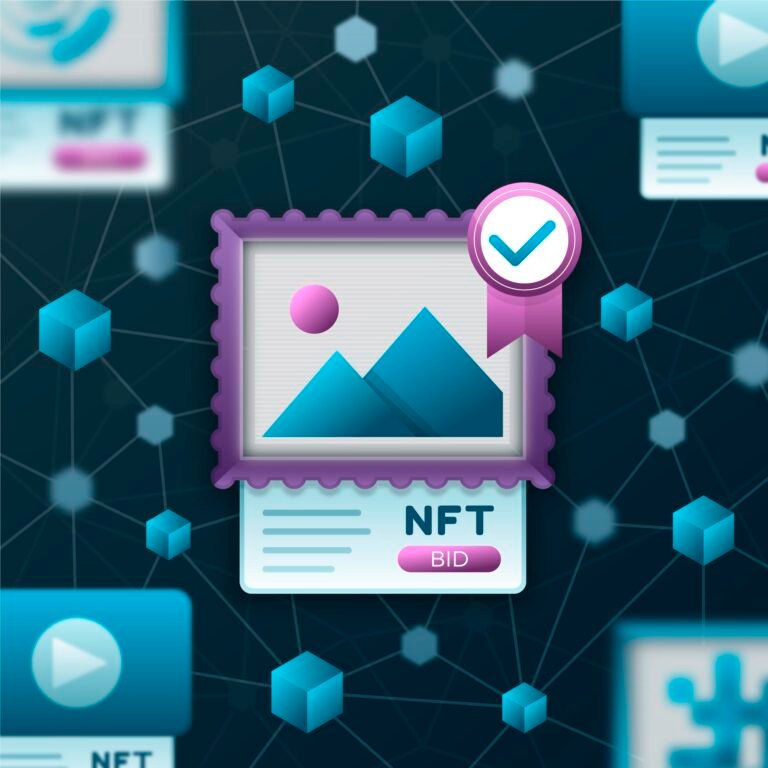Top 10 Crypto Projects with Strong Tokenomics (2025)
1. Why Tokenomics Matter More Than Ever in 2025
In 2025, the crypto market is more competitive, regulated, and investor-savvy than ever. Projects that succeed aren’t just driven by hype — they’re powered by well-designed tokenomics. With rising concerns around inflation, rug pulls, and unsustainable reward systems, investors are paying closer attention to how a token actually works under the hood.

Table of Contents
Strong tokenomics can make or break a crypto project. They affect everything from price stability and user incentives to network participation and long-term growth. Simply put: if a project’s tokenomics are flawed, its entire ecosystem is at risk.
What Makes Tokenomics “Strong”?
Not all tokenomics are created equal. The best ones balance scarcity, utility, and sustainability. Here’s what we looked for when defining strong tokenomics:
- 🔒 Supply Control: Clear total supply caps or deflationary mechanisms (e.g., burns, halving).
- 🧩 Utility-Driven Demand: Tokens must have a purpose (gas fees, governance, staking, etc.).
- 🤝 Fair and Transparent Distribution: No shady insider allocations or vague vesting periods.
- 🎯 Incentive Alignment: Token holders should be rewarded for supporting the ecosystem (e.g., staking, governance participation).
- 📈 Long-Term Sustainability: Emissions, inflation, and rewards must scale with project growth — not kill it.
How This List Was Curated
To identify the top crypto projects with strong tokenomics in 2025, we used the following criteria:
- Token Use Case & Utility – Does the token serve a critical function in the ecosystem?
- Supply Mechanism – Is the token supply inflationary, deflationary, or fixed — and why?
- Staking & Incentives – Are there real rewards for holding or participating?
- Transparency – Is the tokenomics model publicly available and verifiable?
- Market Performance – Has the project maintained long-term community and investor trust?
Whether you’re a beginner or a seasoned investor, understanding the tokenomics behind top crypto projects is essential to making informed decisions. Let’s explore the top 10 examples leading the way.
2. What Defines Strong Tokenomics?
In crypto, tokenomics is more than just a buzzword — it’s the economic engine that powers a blockchain project. Strong tokenomics ensures sustainability, encourages user participation, attracts investors, and helps prevent collapse due to inflation or manipulation.
Below are the core elements that define strong, investor-trusted tokenomics in 2025:
2.1 Balanced Supply and Demand
At the heart of any successful tokenomics model is a healthy supply-demand dynamic.
- Fixed or controlled supply creates scarcity (e.g., Bitcoin’s 21M cap).
- Burn mechanisms (like ETH’s EIP-1559) reduce supply over time.
- Growing demand through real utility drives price appreciation.
💡 The goal: Avoid oversupply while increasing real-world token usage.
2.2 Clear Utility and Ecosystem Integration
Tokens need purpose beyond speculation. The more integrated they are into the platform’s ecosystem, the stronger their fundamentals.
Common utilities include:
- Paying gas/transaction fees (e.g., ETH, SOL)
- Accessing services/products (e.g., FIL, RNDR)
- Participating in governance (e.g., UNI, AAVE)
- Staking for rewards and security
💡 The question to ask: Why would users NEED this token?
2.3 Transparent Distribution and Vesting
Trust in tokenomics starts with transparency. Investors now demand clear answers on:
- How many tokens go to the team, community, investors, treasury, etc.
- When those tokens unlock (vesting schedules)
- Whether insiders can dump on retail holders
💡 Key metric: A healthy distribution prioritizes community and gradual unlocking to avoid sudden price crashes.
2.4 Incentives That Encourage Long-Term Holding
Good tokenomics rewards users who support the ecosystem instead of just short-term trading.
Examples include:
- Staking rewards to lock up supply
- Governance rights for token holders
- Airdrops or fee rebates for participation
💡 Behavior shaping: The best models encourage people to hold, use, and contribute, not just speculate.
2.5 Emission and Inflation Control
Tokens must be issued in a controlled, strategic way that aligns with ecosystem growth.
- Early rewards attract users but should taper off
- Inflationary models must add real utility to justify growth
- Deflationary mechanics help long-term value, if balanced
💡 Strong projects adjust emission schedules as the network matures — from bootstrap mode to sustainable growth.
2.6 Governance and Decentralization
More projects are giving token holders a say in decision-making:
- Treasury management
- Protocol upgrades
- Fee structure changes
💡 A DAO (Decentralized Autonomous Organization) backed by token-based voting increases trust, decentralization, and community ownership.
3. Top 10 Crypto Projects with Excellent Tokenomics (2025)
Below is a breakdown of 10 standout crypto projects whose tokenomics are considered models of sustainability, fairness, and utility. Each example highlights what makes their token design effective in today’s maturing crypto landscape.
3.1 Ethereum (ETH)
Utility-Driven + Deflationary Mechanics
- Token Use Case: Gas fees, staking, DeFi/NFT backbone
- Tokenomics Strengths:
- EIP-1559 burn mechanism reduces circulating supply.
- Transition to Proof of Stake (PoS) enables staking rewards.
- No fixed cap, but ETH is becoming deflationary during high usage.
- Why It Works: ETH’s role as the foundational layer for smart contracts and DeFi ensures continuous demand.
3.2 Binance Coin (BNB)
High Utility + Quarterly Burns
- Token Use Case: Trading fee discounts, BNB Chain gas, launchpad participation
- Tokenomics Strengths:
- Quarterly coin burns until 50% of total supply is destroyed.
- Broad ecosystem use — from CEX to DeFi and NFTs.
- Why It Works: Deflation combined with practical utility across Binance’s massive ecosystem supports long-term value.
3.3 Solana (SOL)
Low Fees + Staking Incentives
- Token Use Case: Transaction fees, staking, validator rewards
- Tokenomics Strengths:
- High TPS = more usage = more transaction fees.
- Staking secures the network and pays rewards.
- Some fee burn adds mild deflationary pressure.
- Why It Works: SOL balances throughput, staking incentives, and modest inflation.
3.4 Chainlink (LINK)
Oracle Rewards + Staking for Security
- Token Use Case: Pay for oracle data, stake to support oracle uptime
- Tokenomics Strengths:
- Staking aligns node operators with network integrity.
- Chainlink’s data feeds are indispensable across DeFi.
- Why It Works: LINK integrates deeply into the infrastructure layer of Web3.
3.5 Avalanche (AVAX)
Subnets + Fee Burning
- Token Use Case: Gas for all subnet activity, staking
- Tokenomics Strengths:
- All fees are burned, reducing supply over time.
- AVAX secures a multi-chain ecosystem via subnets.
- Why It Works: A scalable and deflationary model across customizable chains.
3.6 Polygon (MATIC)
Scaling Ethereum with Long-Term Burn Strategy
- Token Use Case: Gas fees, staking, validator rewards
- Tokenomics Strengths:
- EIP-1559 burn mechanism introduced to reduce supply.
- Staking supports PoS security and ecosystem growth.
- Why It Works: Polygon supports high adoption with ETH compatibility and deflation incentives.
3.7 Cosmos (ATOM)
Staking-Centric with Interchain Utility
- Token Use Case: Hub security, governance, staking rewards
- Tokenomics Strengths:
- Dynamic inflation encourages staking participation.
- New tokenomics proposals (ATOM 2.0) aim to improve scalability and utility.
- Why It Works: Interoperability across blockchains boosts ATOM’s relevance and demand.
3.8 Uniswap (UNI)
Governance-First with Large Treasury
- Token Use Case: Protocol governance, future fee sharing
- Tokenomics Strengths:
- No direct utility (yet), but treasury enables long-term innovation.
- Decentralized control fosters community-led development.
- Why It Works: UNI is positioned as a decentralized powerhouse in DeFi governance.
3.9 Arbitrum (ARB)
Layer 2 Token with Decentralized Governance
- Token Use Case: DAO voting, ecosystem incentives
- Tokenomics Strengths:
- Massive DAO treasury for ecosystem funding.
- Airdrop distribution created early community loyalty.
- Why It Works: Governance-first design supports long-term protocol evolution.
3.10 Filecoin (FIL)
Real-World Utility in Decentralized Storage
- Token Use Case: Pay for storage, collateral for providers
- Tokenomics Strengths:
- FIL is minted through work (providing data storage).
- Dynamic supply tied to real usage and demand.
- Why It Works: Utility-based issuance aligns incentives between supply, demand, and performance.
4. Tokenomics Comparison Table: Highlights at a Glance
To help you quickly compare these top-performing crypto projects, here’s a side-by-side table outlining their token supply models, utilities, incentives, and unique economic features.
| Project | Token | Max Supply / Cap | Utility | Burn / Deflation | Staking / Incentives | Key Tokenomics Feature |
| Ethereum | ETH | No cap (net deflationary) | Gas, staking, DeFi/NFT use | ✅ EIP-1559 burn | ✅ Staking rewards | Burns + High ecosystem demand |
| Binance | BNB | 200M → 100M (post burns) | CEX fees, BNB Chain gas | ✅ Quarterly burns | ❌ (used directly) | Utility + Scarcity combo |
| Solana | SOL | ~560M (inflation-controlled) | Gas, staking | ✅ Partial burn | ✅ PoS staking rewards | High TPS = usage demand |
| Chainlink | LINK | 1B | Oracle payments, staking | ❌ No burns | ✅ New staking module | Staking aligns node honesty |
| Avalanche | AVAX | 720M (capped) | Subnet fees, staking | ✅ All fees burned | ✅ PoS staking | Scalable + fully deflationary |
| Polygon | MATIC | 10B | Gas on Polygon, staking | ✅ EIP-1559 on-chain | ✅ Validator rewards | ETH-compatible burn + utility |
| Cosmos | ATOM | Inflationary (~20%→7%) | Staking, governance | ❌ No burns | ✅ Dynamic inflation staking | Interchain staking model |
| Uniswap | UNI | 1B | Governance only (so far) | ❌ No burns | ❌ No incentives yet | Community-driven treasury |
| Arbitrum | ARB | 10B | Governance (L2 utility planned) | ❌ No burns | ✅ Ecosystem rewards | DAO treasury control |
| Filecoin | FIL | 2B (minted on demand) | Pay for storage, provider collateral | ❌ No burns | ✅ Work-for-tokens model | Real-world demand = token minting |
✅ Legend:
- ✅ = Present / Implemented
- ❌ = Not applicable / Not yet active
Key Takeaways from the Table
- Projects like Ethereum, BNB, and AVAX combine utility with deflation to boost value.
- Staking and real use cases (e.g., Filecoin, Chainlink) are key for long-term sustainability.
- Governance tokens (like UNI, ARB) are moving toward value capture through community proposals and fee-sharing models.
5. Key Takeaways: What Investors Should Learn About Tokenomics
As crypto matures, tokenomics is no longer a “nice-to-have” — it’s a core metric for evaluating a project’s health, sustainability, and long-term potential. Here are the biggest insights from the top 10 projects we analyzed:
🔑 1. Utility Drives Demand, Not Just Hype
Tokens with real use cases (gas fees, staking, governance, storage payments) are more resilient than speculative coins. ETH, FIL, and LINK are strong examples — their value is directly tied to how much they’re actually used.
📌 Tip: Ask yourself, “What do people need this token for daily?”
🔒 2. Controlled Supply = Stronger Scarcity
Projects like BNB, AVAX, and MATIC use burn mechanisms or capped supply models to limit inflation. Ethereum’s EIP-1559 burn has even made ETH deflationary at times — a major driver of price strength.
📌 Tip: Look for burn models, fixed caps, and gradual vesting schedules.
💸 3. Incentive Alignment Matters
Solid tokenomics reward users who support the network — whether through staking (SOL, ATOM), providing services (FIL), or participating in governance (ARB, UNI).
📌 Tip: A good system rewards long-term holders, not just early insiders.
📊 4. Transparency Builds Trust
Clear documentation of token supply, allocations, and unlock schedules separates serious projects from shady ones. Teams like Polygon and Chainlink provide detailed, public tokenomics breakdowns.
📌 Tip: Always check for a publicly available tokenomics page or whitepaper.
🧠 5. Tokenomics Can Evolve
Great tokenomics aren’t set in stone — they adapt as the ecosystem grows. Projects like Cosmos and Chainlink are refining their models to remain competitive and community-friendly.
📌 Tip: Projects that update their tokenomics for scalability and fairness tend to last.
💥 Final Insight
Strong tokenomics = long-term value.
While hype and marketing might drive a token short term, it’s the underlying economic design that keeps a project alive, usable, and investable in the long run.
6. Conclusion: Final Thoughts on Tokenomics & the Future of Crypto Investing
In 2025, tokenomics is no longer just a technical footnote — it’s one of the most important factors separating successful crypto projects from failed ones. From deflationary supply models to utility-driven demand and staking incentives, the economic design of a token defines its long-term fate.
As we’ve seen in this guide:
- Ethereum’s burn mechanism, BNB’s quarterly reduction, and AVAX’s capped supply give their tokens lasting scarcity and value.
- Projects like Chainlink, Filecoin, and Cosmos demonstrate that real-world utility and protocol participation matter more than hype.
- Governance-first models like Uniswap and Arbitrum show us how decentralized decision-making is becoming the new norm.
💡 Final Advice for Crypto Investors
Before you invest in any coin or token:
✅ Study its tokenomics — not just the price chart.
✅ Understand its purpose — not just its market cap.
✅ Check its supply model and vesting schedule — not just the hype on Twitter.
✅ Look for long-term alignment, not short-term gains.
Read Also: Stablecoin Tokenomics: How Pegs, Collateral, and Algorithms Work







